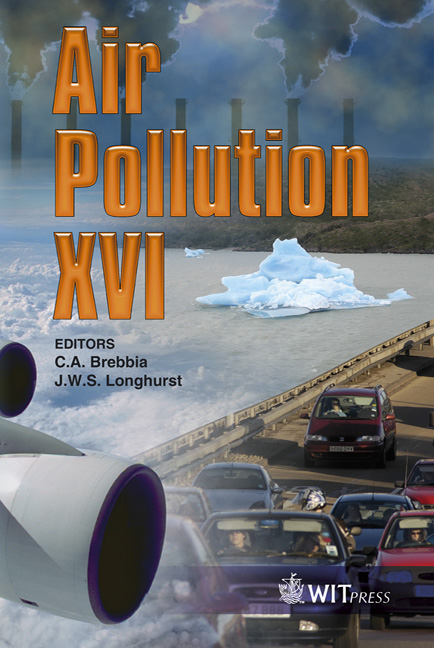Comparison Between Ozone Monitoring Data And Modelling Data, In Italy, From The Perspective Of Health Indicator Assessments
Price
Free (open access)
Transaction
Volume
116
Pages
10
Page Range
125 - 134
Published
2008
Size
795 kb
Paper DOI
10.2495/AIR080141
Copyright
WIT Press
Author(s)
A. De Marco, A. Screpanti, S. Racalbuto, T. Pignatelli, G. Vialetto, F. Monforti & G. Zanini
Abstract
The need for comparison between monitoring data and modelling data on ozone comes both from the qualitatively and quantitatively scarce outcome of the Italian ozone monitoring network and, at the same time, from the necessity for assessment and validation of the modelling methodology. Indeed, the distribution of the monitoring stations in Italy is not uniform and a dramatic lack of data is observed in all of the southern Italian areas. A number of different strategies can be applied to obtain a uniform distribution of data within the territory. The methodology of \“spatialization” is described in the paper and applied to the health exposure indicator SOMO35 (developed by the WHO), pursuing the ultimate objective of identifying risk areas for the population. Such areas are then compared with similar areas from the analysis carried out by the Italian Integrated Assessment model RAINS Italy. The comparative analysis reported in this paper highlighted the differences, deepening the background rationale and ultimately increasing the robustness of the health risk analysis. Moreover, maps generated by the model could also be used to identify critical areas not covered by monitoring stations, so driving a more cost efficient allocation of expensive equipment. Keywords: SOMO35, kriging, RAINS Italy, health risk area, tropospheric ozone.
Keywords
SOMO35, kriging, RAINS Italy, health risk area, tropospheric ozone.





